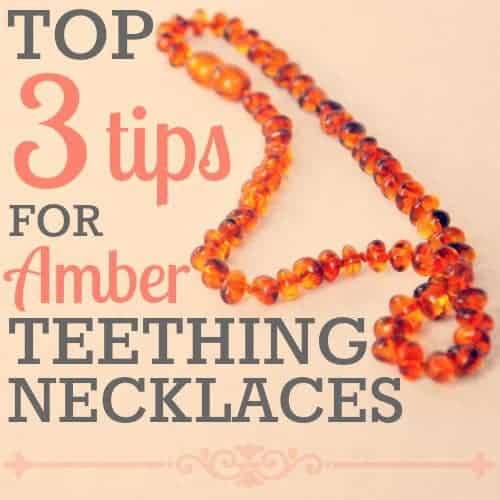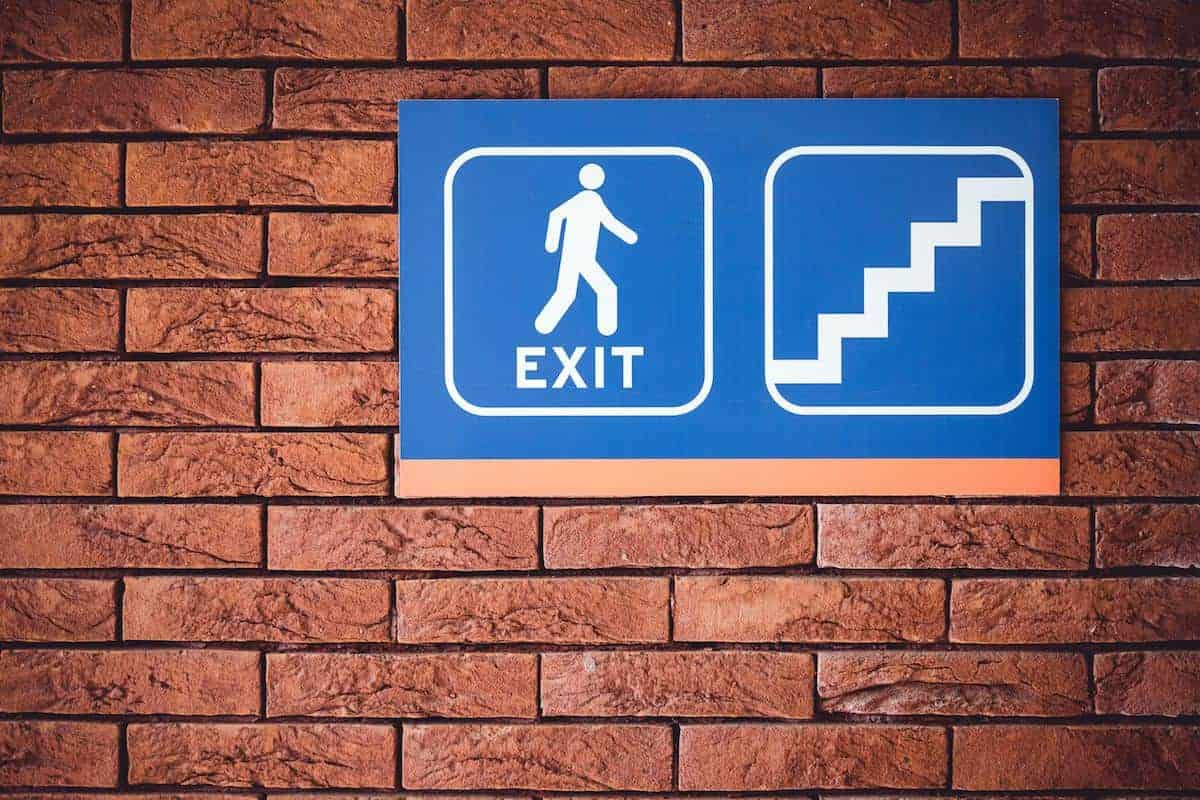Welcome to this comprehensive guide on expressive art therapy. This practice is gaining more attention as a powerful tool in the mental health field. It offers a safe and creative way to process emotions, reduce stress, and uncover hidden aspects of one’s self. With roots in art and psychotherapy, art therapy combines techniques from both to create a unique experience that can bring forward healing and insight.
The approach combines traditional psychotherapy with artistic media, including visual arts, music, movement, drama, and writing. The aim is to provide a space for individuals to express themselves, break through emotional blocks, discover their passions, and get reconnected to their essence. This practice is applicable to all ages, genders, abilities, and cultures. In this guide, you will learn about the history and basis of expressive art therapy, the types of activities used, how it benefits people, the certification process, and how to receive training. There is an abundance of information to unpack and explore, so let’s begin!

Introduction to Expressive Arts Therapy
Expressive Arts Therapy (EAT) is a holistic approach to mental health that combines creative therapy tools with traditional talk therapy. It uses creative activities such as drawing, painting, music, and dance to help clients access and explore deep emotional material in a safe and non-threatening way. The aim of EAT is to help people give a voice to their emotions and gain insight into their inner lives without the use of words. EAT encourages self-expression, which can ultimately lead to healing, growth, and personal transformation. With its increasing popularity, more and more individuals and therapists are seeking certification and training in the area of expressive art therapy. In this guide, we’ll explore the many facets of EAT, including the benefits, training and certification, and types of activities.
History and Basis of Expressive Arts Therapy
Expressive art therapy is a form of psychotherapy that uses art to express one’s thoughts and emotions. It has roots in the early 20th century when the first developed idea of using art to help people explore their innermost feelings was introduced. During this period, art was used as a tool for helping individuals to express their unconscious impulses and emotions. Expressive art therapy became more widely accepted once Carl Jung’s theories of symbolism and archetype became popular in psychoanalysis.
Today, expressive arts therapy combines traditional psychotherapeutic techniques with creative visual arts, such as painting, drawing, collage, sculpture, or mixed media art. The primary goal of expressive arts therapy is to help individuals explore and better understand their emotions and feelings. This is done through creative self-expression, which encourages individuals to be open with themselves and explore the depths of their personal thought processes.
READ MORE: Helpful Art Therapy Ideas for Kids and Adults
The use of art in expressive art therapy can be a powerful tool in helping individuals to feel safe and secure while expressing themselves. Through the creation of art, an individual can develop a deeper understanding of how their mind works and gain insight into their emotional and mental states. In order for expressive art therapy to be effective, it is important for the therapist to create a safe and supportive environment in which the individual can freely explore their emotions without judgment.
Expressive art therapy has been used in various contexts, including addiction treatment, crisis intervention, trauma rehabilitation, and mental health treatment. It is considered to be an effective therapeutic technique as it encourages self-expression and allows the individual to explore and understand their emotions in a non-confrontational manner. As such, expressive art therapy can be beneficial for those suffering from depression, anxiety, and other mental health disorders.
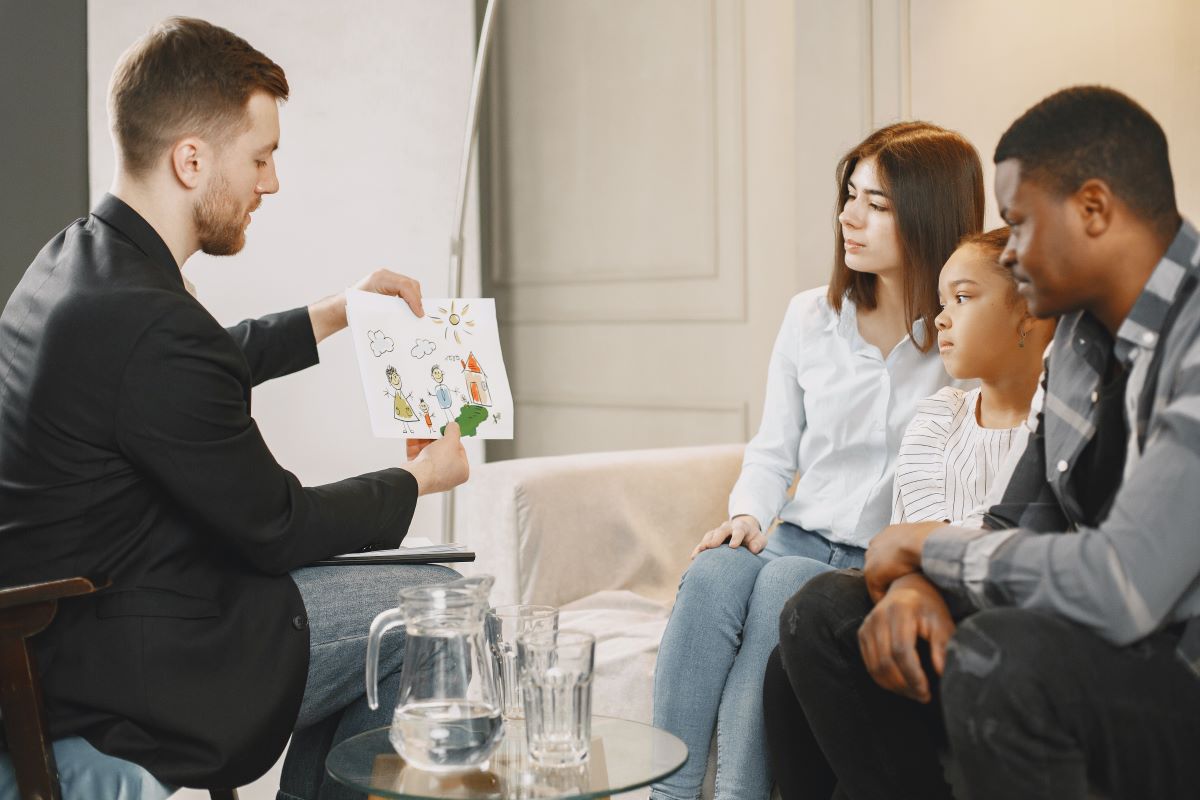
Types of Expressive Arts Therapy
Expressive arts therapy utilizes activities from different art forms to target a variety of therapeutic goals. It can include painting, drawing, sculpture, music, dance, drama, creative writing, and photography, among other activities. Traditional talk-based approaches help clients gain insight by talking about their feelings and experiences, which can be a very useful tool. However, expressive art therapy is a great complement to traditional mental health treatments, as certain topics may be difficult to discuss verbally.
READ MORE: Why Normalizing The Benefits Of Therapy Is An Important Life Lesson
Through art activities, clients can explore, express and develop insight into their emotions, beliefs, and behaviors.
The creative process can provide a sense of mastery and control, allowing people to develop healthier relationships with themselves and their emotions. By engaging in creative activities, clients can also begin to access and express deep emotions without judgment or criticism. The process of art-making can foster the development of personal growth, self-reflection, and relaxation while giving clients a sense of joy and purpose. In addition, expressive art therapy can also provide new perspectives and insights that are not available through other forms of treatment.
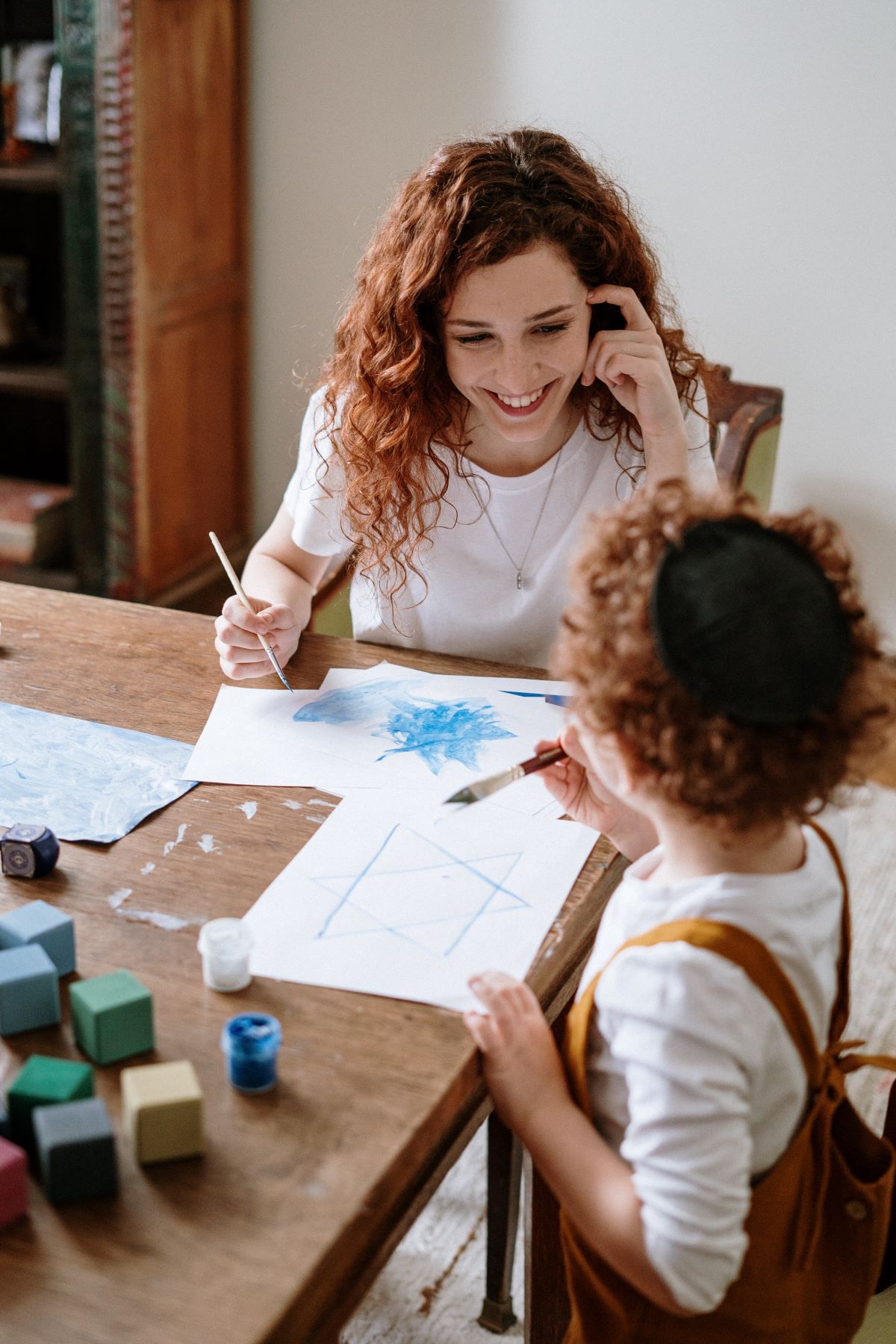
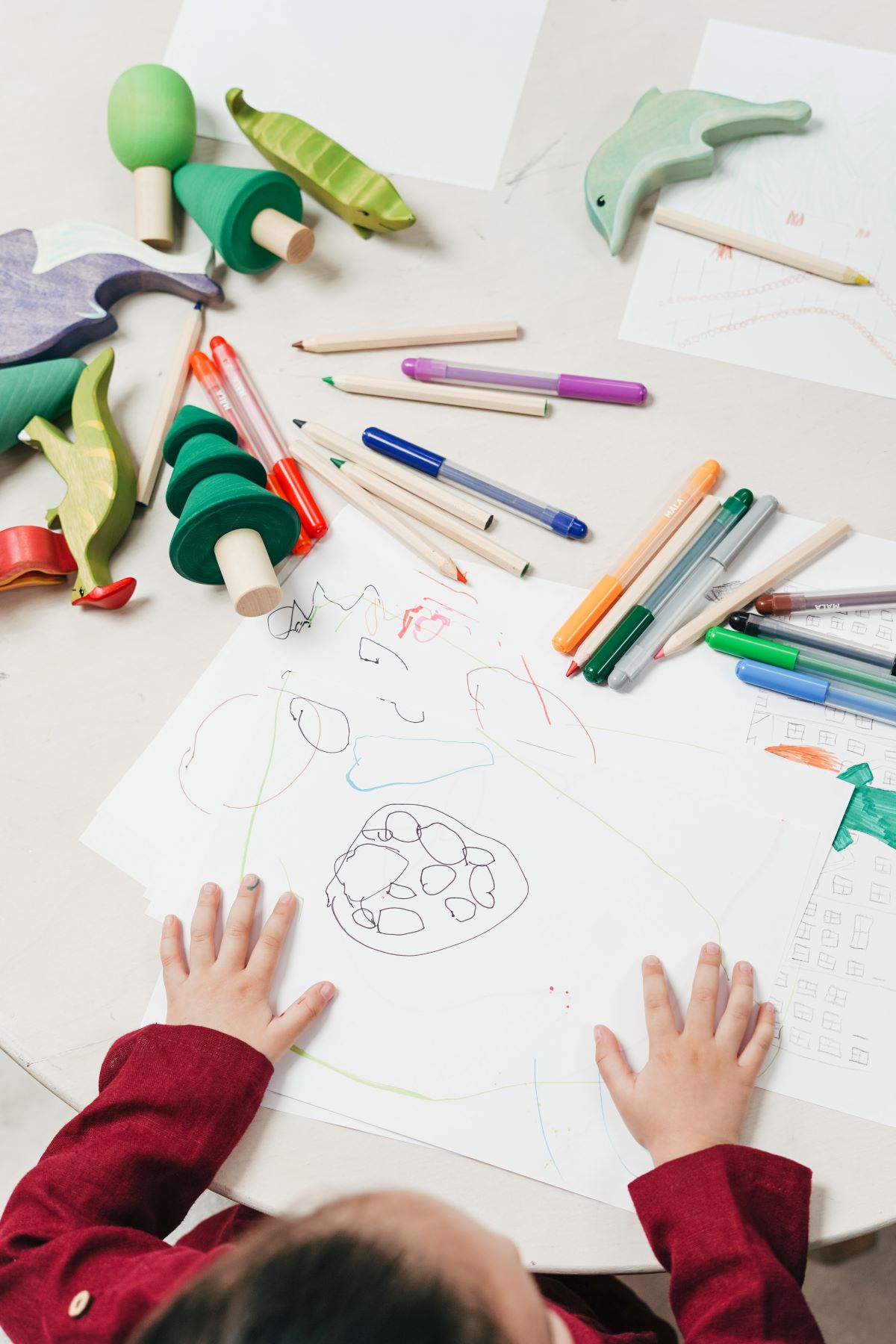
Art Therapy vs. Expressive Arts Therapy
Art therapy and expressive art therapy are both forms of psychotherapy, but they differ in how they use creativity and the arts to address mental health concerns. The first major distinction between the two is that while art therapy often involves a direct focus on the artwork itself, expressive art therapy is more about the process of creating art and using it as an expression of feeling rather than an end result.
An art therapist may have clients draw or paint a picture with a specific goal in mind, such as exploring a particular emotion or developing insight. The artwork is then analyzed and discussed to gain further insight into the client’s thought processes. On the other hand, an expressive art therapist would encourage their clients to express their emotions through painting, drawing, or other creative activities without putting pressure on creating anything specific.
READ MORE: Kids Meditation and Their Mental Health: Why You Should Teach Them Now
Another difference between the two types of therapy is that art therapy typically uses formal assessment techniques to evaluate progress and make treatment decisions, while expressive art therapy is more of a free-flowing form of therapy where progress and outcomes are tracked through observation. Art therapists often go through a formal program in order to receive certification, while expressive art therapists might have less formalized training and may pursue a certificate in expressive art therapy instead.
Finally, art therapy generally works best with people who are able to verbalize their thoughts and feelings, while expressive art therapy is often more effective for those who have difficulty communicating verbally. This makes expressive art therapy particularly useful for children and individuals with developmental disabilities, who may struggle with verbal communication but be more open to discussing their feelings through art.
Benefits Of Expressive Arts Therapy
The benefits of expressive arts therapy are wide-reaching and include both physical and mental health advantages. One of the primary benefits of expressive arts therapy is improved emotional regulation. By participating in creative activities such as painting and drawing, clients can learn to express and release emotions without being overwhelmed by them. This can lead to improved mental and emotional health, as well as improved communication and relationship skills.
Another is improved self-awareness and creative connection process. By engaging in creative connection activities, clients can gain a better understanding of their internal experiences and how their thoughts, feelings, and behaviors are interconnected. This can lead to improved insight into oneself and a better understanding of who one is.
Expressive arts therapy also offers clients the opportunity to develop self-expression, problem-solving skills, and coping strategies. By creating art and engaging in artistic activities, clients can explore different ways of expressing themselves, as well as practice problem-solving skills in a safe environment. This can lead to improved resilience, further promoting mental and emotional wellness.
On top of all of that, expressive art therapy provides a form of relaxation. Creative activities can be used as a form of stress relief, allowing clients to take a break from their day-to-day thoughts and experiences. This can lead to improved physical health, both by reducing stress hormones and by providing a form of exercise.
READ MORE: The Exploration of Play Therapy for Children
There are numerous benefits to individuals who seek out this type of therapy. From improved emotional regulation to increased relaxation and resilience, expressive art therapy can provide a wide range of health and well-being advantages. Listing the benefits of expressive art therapy is only the beginning of the healing process – for individuals to best reap the rewards, they must be willing to engage in the activities and practices of expressive arts therapy.

Limitations Of Expressive Arts Therapy
Although expressive art therapy can be effective in many cases, it has its limitations. These limitations include the individual’s commitment to the process, conflicting opinions or interpretations, and the therapist’s own bias.
Clients need to have the desire and willingness to actively participate in the process. Without their full commitment, the therapy may be less beneficial or even ineffective. Additionally, the interpretations of the art created in the sessions can be subjective and open to debate. As a result, there can be disagreements over the meaning of the artwork between the client and the therapist. Also, the therapist’s own self-awareness and preconceived ideas can affect the outcome of expressive art therapy. It is important for therapists to be self-aware and prioritize the client’s well-being rather than personal beliefs and biases.
It is important to note that these limitations do not mean expressive art therapy does not work. For those who are willing to commit and are properly matched with a qualified expressive art therapist, it can be a powerful tool in assisting with emotional and mental health needs.
Activities Used in Expressive Arts Therapy
The activities used in expressive art therapy are all unique to the individual participant’s choice. Depending on the needs of the client, the therapist may recommend certain activities throughout the course of treatment. These can range from traditional forms of art such as drawing or painting, to the less conventional use of clay, found objects, and even verbal storytelling. It is important to note that participants do not need to have any artistic experience or talent in order to benefit from expressive art therapy activities. It is primarily the expressive aspect of the activity that can be therapeutic, regardless of skill level.
READ MORE: What is Cognitive Behavioral Therapy?
In addition to traditional expressive art activities such as painting, drawing, and sculpting, there are also other activities often used. These include drama, music, collage, dreamwork, poetry writing, sand tray, and narrative exercises. Some expressive art therapists may also use the relatively newer techniques of expressive movement, drawing to music, artwork analysis, and guided visualizations. All of these activities can be used to explore feelings and experiences, as well as to gain insight into the individual’s personal narrative.
By participating in expressive art therapy activities, individuals can learn to express themselves in a safe and creative manner. This type of therapy can be especially beneficial for those who feel overwhelmed by their thoughts, emotions, and situations. While engaging in expressive art activities, people can identify unhelpful patterns, gain insight into difficult experiences, and develop greater self-awareness.

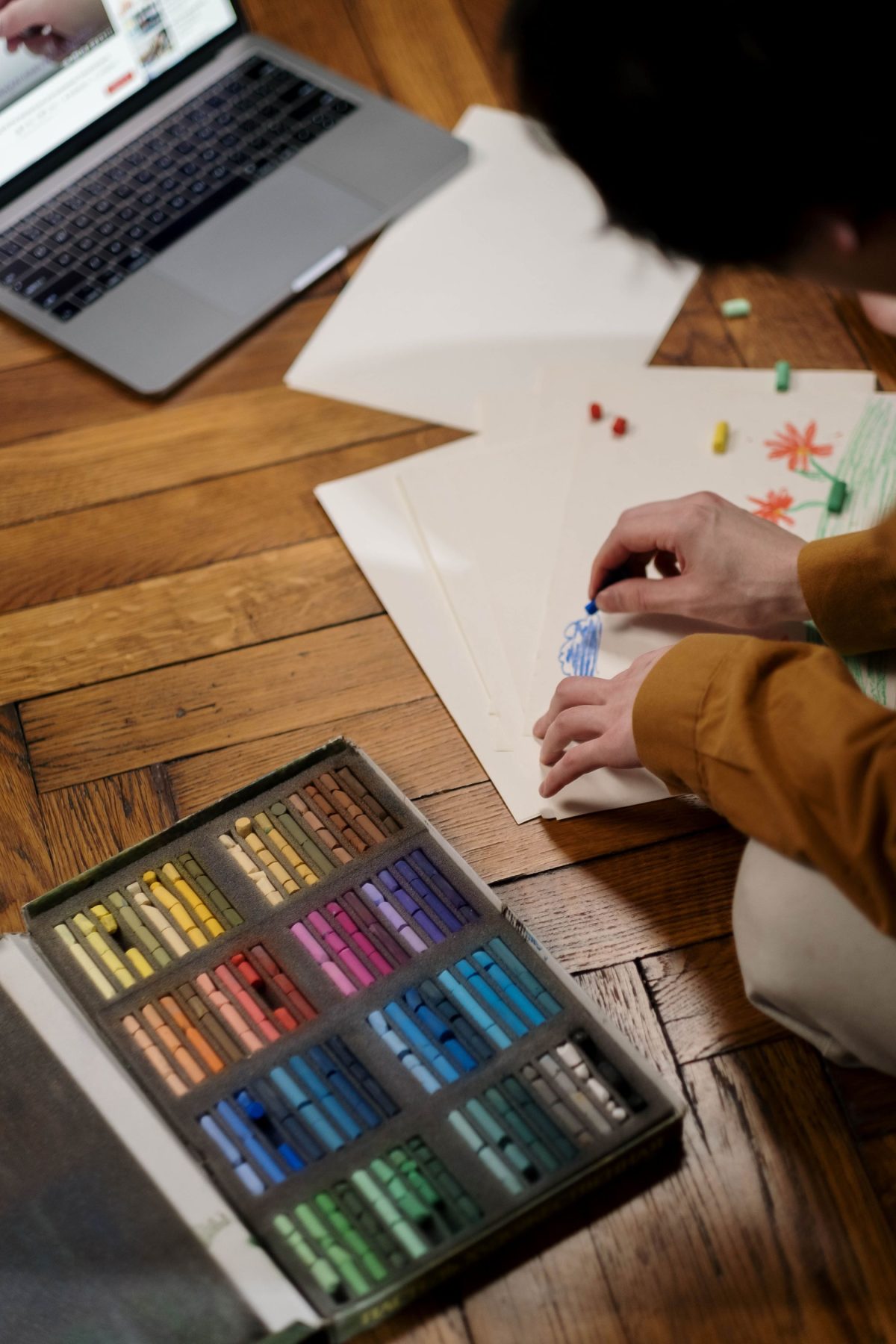
Certification and Training Information for Expressive Art Therapy
Expressive arts therapy is an invaluable tool for those seeking to understand themselves and the world around them. To be certified in this practice, there are numerous training and certification resources available.
The first step to becoming certified involves completing a formal program at an accredited university. These typically require around 60 hours of coursework and activities, so it is important to have a good understanding of the program’s curriculum before enrolling. Depending on the program, there may also be a thesis requirement.
Once a person has completed a program, they need to take and pass the National Counselor Examination (NCE) and the National Certification Exam for Art Therapists (NCEAT) to become certified. The NCE and the NCEAT both measure a person’s knowledge and skills in the area of expressive art therapy.
The American Art Therapy Association (AATA) offers various resources to those pursuing certification. They provide information on the NCE and NCEAT exams, as well as other resources to assist with proper preparation.
The AATA also offers specialized training programs that focus specifically on expressive art therapy. These include short courses, workshops, seminars, and other programs that allow learners to gain valuable experience in the field. In addition, the AATA also offers clinical supervision to individuals who want to pursue clinical practice in expressive art therapy.
Finally, the AATA maintains a list of certified expressive art therapists, which can be a great resource for those seeking practice opportunities.
Becoming certified in expressive art therapy is a rewarding experience and opens up a variety of paths for those looking to help others through the power of art. The right combination of education, experience, and certifications can help those interested in becoming certified open many doors.
Expressive arts therapy is an effective holistic approach to mental health that provides therapeutic benefits to clients of all backgrounds. By facilitating creative expression, this type of therapy can help individuals to explore their feelings and find a means of self-expression that can relieve stress and help to overcome negative emotions. Through this type of therapy, clients have the opportunity to explore a variety of artistic mediums so as to gain insight into their own thoughts and feelings.
The ultimate goal of expressive arts therapy is to help individuals to understand and manage their feelings better, leading to greater overall well-being. Through these activities and techniques, individuals can gain an understanding of how to work through and process their emotions. Practitioners can access courses, workshops, and certification programs to further their knowledge and develop effective strategies for providing useful expressive art therapy to their clients.
In conclusion, expressive art therapy offers various benefits to people of all ages and backgrounds. By combining creative activities with counseling and therapeutic interventions, practitioners and clients can use expressive art to explore their emotions in a safe and supportive environment. With the help of a certified expressive arts therapist, individuals can learn to express themselves more effectively and enjoy the therapeutic benefits of creativity.
WANT TO READ MORE?
INSERT RELATABLE ARTICLE TITLE HERE
CONNECT WITH DAILY MOM
💖 NEWSLETTER: DAILY READS IN YOUR INBOX 💖
Sign up to receive our picks for the best things to do, see and buy so you can relax and focus on more important tasks! Let us help you be the best version of yourself you can be!
BE SOCIAL WITH US
📌 LOVE IT? PIN IT!📌




































